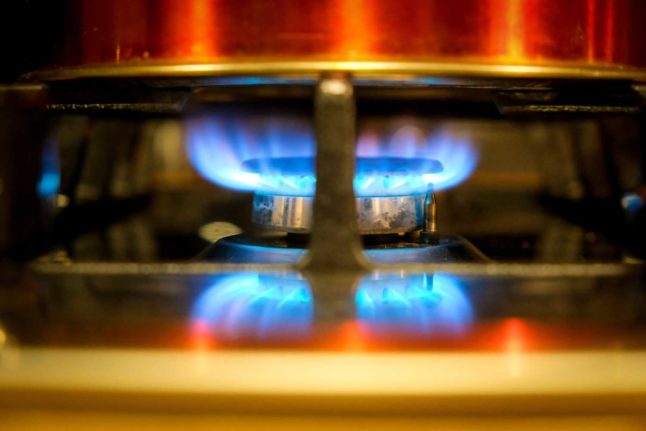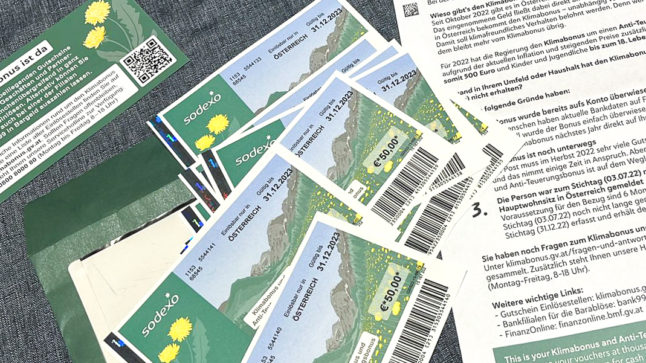As Europe anxiously awaits the restart (or not) or the Nord Stream 1 pipeline from Russia to Germany, regional government officials in Austria are busy preparing contingency plans in case gas supplies come to an end.
Before the planned maintenance work started on Nord Stream 1 on July 11th, gas supplies from Russia had already been cut to several European countries, including Bulgaria, Finland and Poland.
Supplies to Austria had also dwindled to around 40 percent of the agreed amount at a time when storage facilities need to be restocked ahead of the next autumn and winter season.
And on Monday (July 18th), Gazprom notified German gas suppliers Uniper and RWE that it could no longer guarantee supplies via Nord Stream 1 due to “force majeure”, as reported by Reuters.
READ MORE: Russia further reduces gas supplies to Austria
At the time of writing, there were no reports that Austria’s energy company OMV could also be impacted by further disruptions. On Tuesday, a representative from OMV told APA they expected Austria’s gas supply to resume after the maintenance work was completed.
But what will happen if we do enter winter with a shortage of gas? This is exactly what the Österreichischer Städtebund (Austrian Association of Cities) is currently discussing.
Here’s what you need to know about the plans and possibilities that are on the table.
Schools
According to a report by Der Standard about the Association of Cities meetings, schools that are heated with gas could face a challenging time this winter.
One possibility to reduce energy consumption and keep schools going is to only heat half of a building and to teach pupils in a large area, like the school gym. Digital technology could facilitate this.
Distance learning is also on the table, although a representative from the Association of Cities told Der Standard that home schooling – as seen in Covid-19 lockdowns – is not being planned and is unlikely to return.
FOR MEMBERS: How to keep your apartment cool in Austria this summer amid rising energy prices
Street lighting
To save energy without causing too much disruption, an idea has been floated to only use every second street light instead of all street lights. This would effectively cut energy consumption by 50 percent.
But Der Standard reports that this could raise legal questions, such as who is liable in the event of an accident.
When it comes to lowering energy consumption from other essential facilities, Josef Leitner (SPÖ), Mayor of the Lower Austrian municipality of Wieselburg, said: “The room for manoeuvre is relatively modest.”
Swimming pools
Indoor swimming pools use energy to keep the water heated and operators are likely to quickly face restrictions if gas supplies have to be rationed. Possible measures could lead to reduced operating times and cooler water temperatures.
There could also be restrictions on gas usage for outdoor swimming pools, even before the end of the summer season – a move that is already being enforced in some parts of Germany.
FOR MEMBERS: ‘No country is an island’: Is it time Austria abandoned neutrality?
Non-essential and public buildings
As with swimming pools, non-essential buildings (including places like youth centres) will probably face restrictions to the gas supply if emergency measures are brought in.
This would allow gas to be diverted to essential services and facilities.
Turning off the hot water supply in public buildings is another suggestion, with questions raised over the necessity for hot water for washing hands.
Regional plans already in place
As well as contingency plans being made on a national level, some regional leaders are already making preparations on a local level, with varying degrees of urgency across the country.
The municipality of Wieselburg in Lower Austria has purchased generators for waterworks and sewage treatment facilities, as an emergency measure.
In St Pölten, two thirds of district heating is already fuelled by heat from a waste incineration plant. Mayor Matthias Stadler (SPÖ) says this can be increased to 80 percent if needed.
And in the district of Rankweil in Vorarlberg, all municipal buildings are already heated with biomass energy, reducing the region’s dependence on gas.



 Please whitelist us to continue reading.
Please whitelist us to continue reading.
Member comments